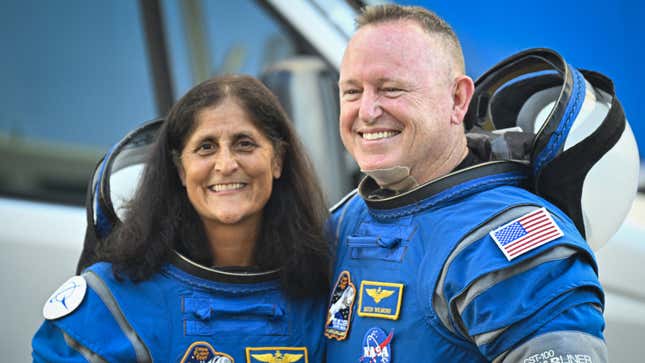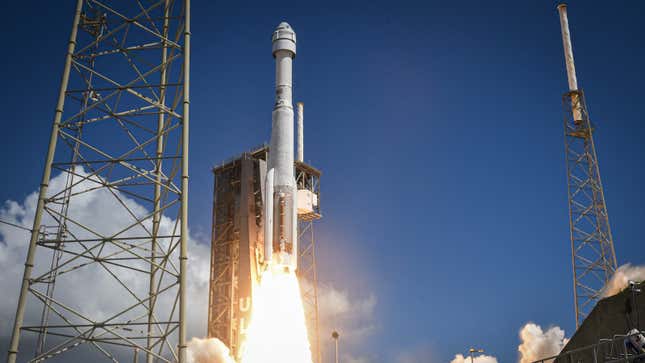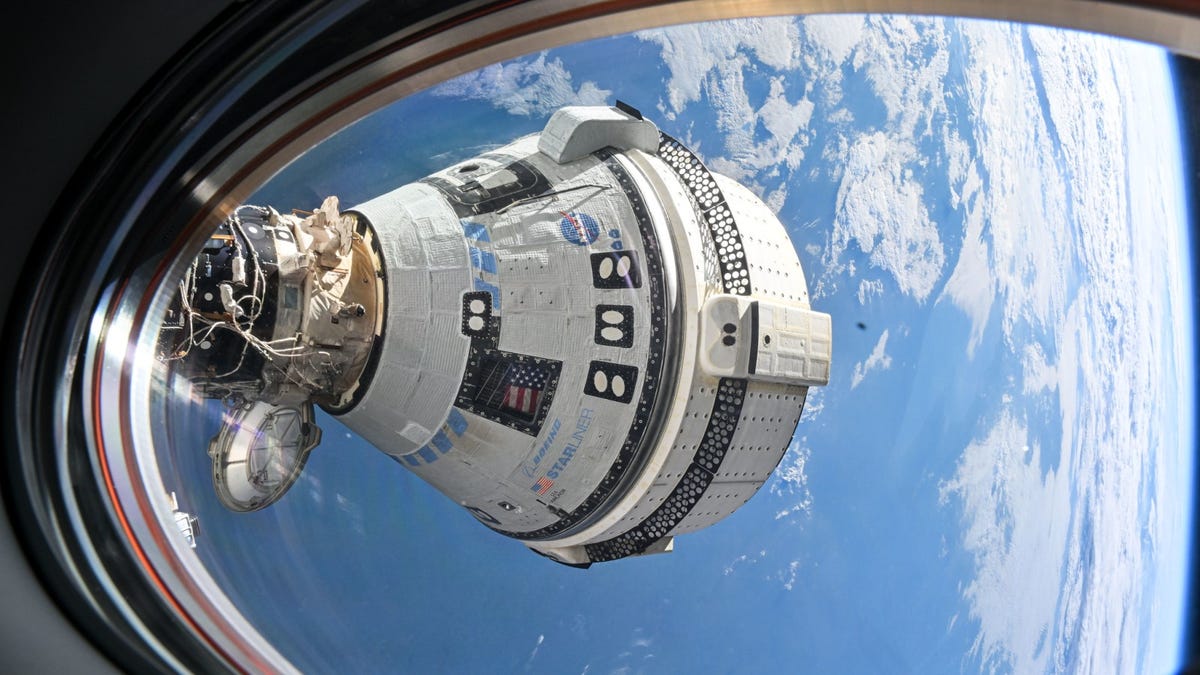Boeing isn’t just having problems on Earth where plane production is facing questions from the top-tier of the U.S. Government, it’s also having issues in space as well. The American company flew two astronauts to the International Space Station last month and leaks onboard its spacecraft mean it hasn’t been able to return them home, leaving them stranded in orbit for 51 days.
The company’s Starliner spacecraft launched on June 5 and docked with the ISS on June 6 where astronauts Butch Wilmore and Suni Williams were projected to stay for up to eight days. Once their mission was complete, the pair was meant to climb back into their craft and fly back to Earth. However, a hydrogen leak left them stranded in orbit ever since, reports the Washington Post.
As of the time of writing, the pair has been stuck on the ISS for 51 days and it sounds as though they’ll be stuck up there for a few more weeks. As the Washington Post reports:
Williams and Wilmore arrived at the space station June 6 for what was supposed to be about am eight-day mission that, as of Friday, has stretched to 51 days. The delay is because of the fact that during the approach to the station, five of the spacecraft’s thrusters shut off suddenly, and the spacecraft also sprung a series of small but persistent helium leaks in its propulsion system. Since then, engineers from Boeing and NASA have been running tests to determine what went wrong and to ensure that the spacecraft is safe to fly Wilmore and Williams home.
At a briefing Thursday, NASA officials still could not say when that would be. They said that Starliner is probably still healthy enough to fly the crew home, but that decision would be made during an intensive review, involving top leadership from NASA and Boeing, that could be scheduled as early as next week.
Engineers have been working around the clock to uncover a fix for the leaky space craft, which has included performing ground tests on Earth to find the best solution, reports Space.com. Through these tests, experts have found that the Starliner thrusters can overheat when firing in quick succession, which could have led to the leak on board.

Because of this discovery, engineers at NASA and Boeing now believe that they can rectify the issue through a change in the way the thrusters onboard are used, rather than through design amendments, as Space.com reports:
[Steve Stich, manager of NASA’s Commercial Crew Program] said that it’s possible the problem could be addressed not by a design change, but by changing the ways in which the thrusters are used in flight (such as firing them less frequently). Discussions are ongoing at the most senior agency levels, he emphasized; NASA plans an agency-level review on CFT as early as next week, and the agency’s Aerospace Safety Advisory Panel will also be invited to it, he said.
Aerojet Rocketdyne has been working closely with Boeing throughout the mission, added Boeing Commercial Crew Program Manager Mark Nappi. Discussions are ongoing as to how to address the issue. New seals might be put in, for example. For the thrusters, Boeing may ask future crews to fly a different profile to the ISS or “put different thermal protection inside the doghouse,” Nappi said today.
Despite these revelations, NASA says it is still not quite ready to bring the astronauts home, with Stich adding that “we’ll come home when we’re ready,” according to the Guardian. For now, the astronauts are being put to work aboard the ISS alongside the other residents of the space station.

However, the Starliner craft is only designed to survive in orbit for up to 90 days, so the crew will be hoping that it won’t take much longer to get them on a flight back home.

